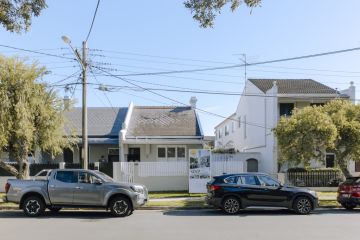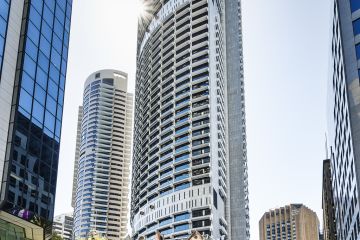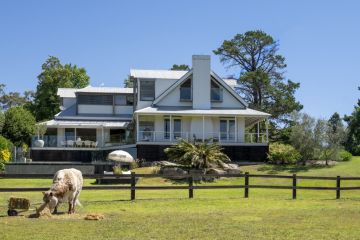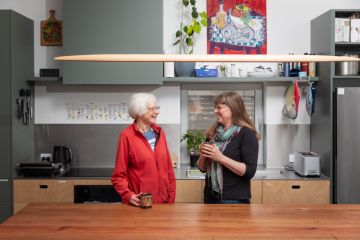Architect designs home that rebels against the McMansion trend
The turn-of-the-20th-century arts and crafts movement, which was an aesthetic rebellion against the mass manufacturing of the Victorian Industrial Age, left us many beautiful artisan-crafted houses, objects, fabrics and ideas.
At Riverview on the north shore, beside the native bushland of Tambourine Bay Reserve, the ever-individualistic architect David Boyle has made a family house that puts strong emphasis on craftsmanship.
With so many kinaesthetic and visually stimulating shapes and spaces, is his evident rebellion against the unfortunate age of the McMansion.
Or, as Boyle likes to refer to them, “those huge, rendered grey boxes with no street presence.”
In the new four-bedroom house, Boyle was asked “to make the most of the block, and make the kitchen the most important room”.
The end result is a lyrical and lovely building of layers that descends in five different strata from the street, through several lateral planes of public living space to the rear deck and pool.
Protecting the living areas like a high western border wall, but visible through the 14-metre-long skylight that traces along the entry hallway, is the dual-level upper wing with two bedrooms for children “and a spare room for guests or play space.”
Everywhere you look in a house that Boyle describes as “curving and cranking, and constricting at pinch points and then opening again”, there is something that draws the eye.
“The whole building is a composition of framed views – to other rooms or to the landscape or sky.”
The diverse and sometimes waveform ceilings are a striking part of this imaginative exploration. Indeed, “the whole building is enticing movement”.
The detailing, however, is the really delicious bit. The chimney breast that serves the front sitting space and the dining area, and is such a one-off shape, is sculpture with a function.
“The chimney is the emotional centre of the house, but this is about celebrating craftsmanship and the world of the tradespeople who express it.
-
Related: A history lesson on terrace houses
-
Related: A ‘poorly planned’ home transformed
“The bricks are laid in two different courses and the zigzag was an edge that suggests an element of feathering – another element of detailing,” Boyle says.
Everything about this house, which won the 2017 NSW AIA residential (new) award, “is bespoke”, he says.
“It was all about putting craft back into a building and of making each little thing an opportunity to do something decorative.”
We recommend
We thought you might like
States
Capital Cities
Capital Cities - Rentals
Popular Areas
Allhomes
More
- © 2025, CoStar Group Inc.







